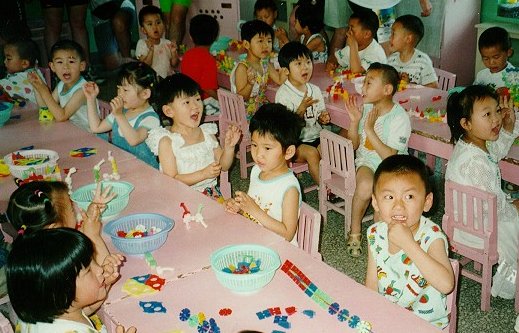| ESE504 : The Class : Elementary : SACD | |||||
 School Age Child
Development
School Age Child
Development
J'Anne
Ellsworth

The essence of increasing our understanding of human nature and working
more effectively with youngsters is tied into our ability to observe. Observing
includes more than what we behold. What we choose to attend to, what we
give meaning to, and how we frame our perceptions provide context for our
observations. We provide personal meaning as well, through our social and
affective filter, things like our mood, social constructs, expectations
and level of well being and development. Here is an example:
![]() A young child
is crying
A young child
is crying
![]() I rush over to
help, for she is bright red, dancing up and down on an ant hill.
I rush over to
help, for she is bright red, dancing up and down on an ant hill.
![]() I feel remorse,
for she is sobbing and I give her an apology.
I feel remorse,
for she is sobbing and I give her an apology.
![]() I feel panicky
for everyone in the room looks over at us.
I feel panicky
for everyone in the room looks over at us.
![]() I feel anger,
for an adult is shaking her.
I feel anger,
for an adult is shaking her.
![]() I try to ignore
the whole thing, since inoculations serve an important end.
I try to ignore
the whole thing, since inoculations serve an important end.
![]() I understand,
for the child looks tired and ready for a nap.
I understand,
for the child looks tired and ready for a nap.
Kohlberg's work on moral reasoning underscores perception from a different angle. How we view situations and the ideas we use to resolve dilemmas is probably maturational. These examples provide a hierarchy that mirror of this.
![]() I see a youngster looking
at another student's paper during an exam.
I see a youngster looking
at another student's paper during an exam.
Another dimension comes from our foundational belief system. If I am a behaviorist, I view things distinctly differently from a humanist, and probably look for solutions in rather different ways. Table 2.2 on page 54 in the Santrock text book provides an example of this. Five different perspectives or theories are used to describe adolescence.
These examples are directly related to our ability to observe. As you do the observations for this class, work to recognize the perspectives you bring to the task.
Ground yourself as clearly as you can, to enhance the value of the time spent and those things that you observe.
In these exercises, do not try to be objective about what you see, but rather introspective.
Attend to your personal viewpoints and belief systems.
Honor and reflect on what you bring to observations.
If you can, go a step beyond and reflect on your observations from a distance, a more omniscient viewpoint.
Make accurate observations, descriptions and inferences about children's development
Try looking at this next picture of a kindergarten in China as an example.

Observations
 E-mail J'Anne
Ellsworth at Janne.Ellsworth@nau.edu
E-mail J'Anne
Ellsworth at Janne.Ellsworth@nau.edu
Web site created by the NAU OTLE Faculty Studio
Course developed by J'Anne
Ellsworth
![]()
Copyright 1998
Northern Arizona University
ALL RIGHTS RESERVED
